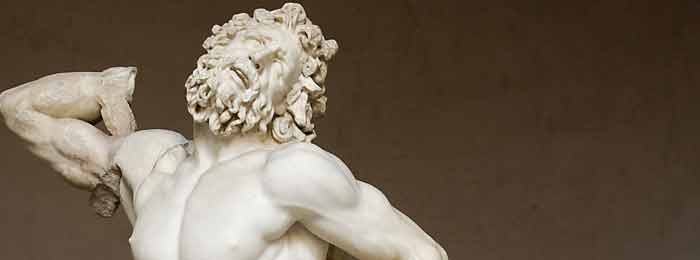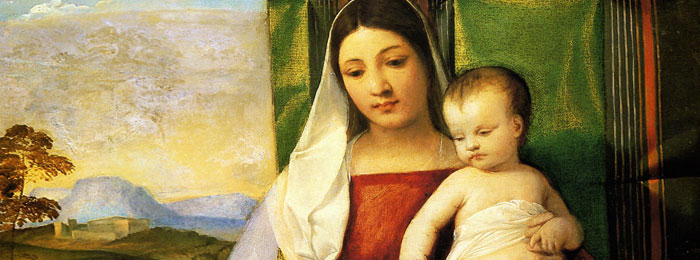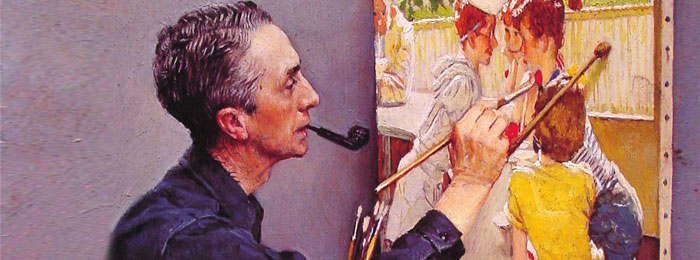On 4 Oct, 2015 With
What the Old Masters knew about Anatomy Laocoon and the Apollo Belvedere – nothing had ever been seen to equal the honours with which these statues were surrounded. Brought out of the earth, they were transported through the towns and escorted by a stately cortege to the places they were to occupy in the palaces of the Pope or the Duke. The court of Lorenzo the Magnificent, at Florence, Brought together a great many of the humanists and artists of the time and from their daily contact a revival of Greek Culture took place. Artists began to perceive, that the Grecian sculptures possessed an even deeper significance than they had heretofore found in them. They saw that these works represented…
Read More
On 31 Aug, 2015 With
Rembrandt, who is thought to have learned from Jacob van Swanenburgh and Pieter Lastmann, no doubt took stylistic cues from the Flemish Technique, the Venetian Technique, and the Direct Painting Technique. When observing his work, one can see that he experimented freely with them, moving between them, but he most certainly employed them all. Over time, as he learned each method, he incorporated aspects from all into a his style—while, of course, adding innovations of his own. Some of his paintings utilize wood as a canvas, as was common with the Flemish Technique, which he appears to have used predominantly in those works. In addition to this, a few of his small studies on wood panels seem to have utilized…
Read More
On 23 Aug, 2015 With
How to paint in style of Raphael The Three Graces is an oil painting by Italian painter Raphael, housed in the Musée Condé of Chantilly, France. The date of origin has not been positively determined, though it seems to have been painted at some point after his arrival to study with Pietro Perugino in about 1500, possibly 1503-1505. According to James Patrick in 2007’s Renaissance and Reformation, the painting represents the first time that Raphael had depicted the nude female form in front and back views. The Three Graces is an oil painting by Italian painter Raphael. The date of origin has not been positively determined, though it seems to have been painted at some point after his arrival to…
Read More
On 23 Aug, 2015 With
Oil painting techniques:Titian’s Palette Titian, the greatest Italian Renaissance painter of the Venetian school. He was recognized early in his own lifetime as a supremely great painter, and his reputation has in the intervening centuries never suffered a decline. Titian was one of the most versatile of Italian painters, equally adept with portraits, landscape backgrounds, and mythological and religious subjects. His painting methods, particularly in the application and use of color, would exercise a profound influence not only on painters of the Italian Renaissance, but on future generations of Western art. In 1590 the art theorist Giovanni Lomazzo declared him “the sun amidst small stars not only among the Italians but all the painters of the world.” During the course…
Read More
On 18 Aug, 2015 With
Venetian Painting Techniques The painting techniques employed by Northern Renaissance artists strongly influenced the work of renowned painters, such as Titian and Giorgione, during the Italian Renaissance. Venetian artists also greatly impacted the styles of this period, notably the Van Eyck brothers. The oil painting techniques developed by these Flemish painters around the year 1400 combined the use of egg tempera and oil painting, with the underpainting being created using a grisaille technique of tempera, while pure colored oil glazes were carefully applied on top. This combination painting technique added remarkable lustre to their small panel paintings, resulting in striking jewel-tones, the most vivid hallmark of the brothers’ famous style. Prior to the Van Eyck brothers’ success with their combination…
Read More
On 9 Aug, 2015 With
Whistler’s Oil Painting Technique Whistler’s approach to portraiture in his late maturity was described by one of his sitters, Arthur J. Eddy, who posed for the artist in 1894: “He worked with great rapidity and long hours, but he used his colours thin and covered the canvas with innumerable coats of paint. The colours increased in depth and intensity as the work progressed. At first the entire figure was painted in greyish-brown tones, with very little flesh colour, the whole blending perfectly with the greyish-brown of the prepared canvas; then the entire background would be intensified a little; then the figure made a little stronger; then the background, and so on from day to day and week to week, and…
Read More
On 1 Aug, 2015 With
Acrylic Paint or Oil Paint? Trying to decide which type of paint to use to paint your next art masterpiece? Should you go with the tried and true oil paints, or should you try the newer medium of acrylic paint? Each of these types of paints has their pros and cons which you should investigate so that you can choose the medium that suits your painting style. You are the artist, you make the call. Oil paint, the traditional medium, is basically powder pigments mixed with clear linseed oil. This paint is slow drying and for that reason is perfectly suited for blending colors together smoothly with plenty of time to contemplate the painting’s progress and still have time to…
Read More
On 26 Jul, 2015 With
TITIAN’S WORKS.Copies or Originals? The works of Titian, though many of his greatest productions have been destroyed by terrible conflagrations at Venice and Madrid, are numerous, scattered throughout Europe, in all the royal collections, and the most celebrated public galleries, particularly at Venice, Rome, Bologna, Milan, Florence, Vienna, Dresden, Paris, London, and Madrid. The most numerous are portraits, Madonnas, Magdalens, Bacchanals, Venuses, and other mythological subjects, some of which are extremely voluptuous. Two of his grandest and most celebrated works are the Last Supper in the Escurial, and Christ crowned with Thorns at Milan. It is said that the works of Titian, to be appreciated, should be seen at Venice or Madrid, as many claimed to be genuine elsewhere are…
Read More
On 21 Jul, 2015 With
Caravaggio’s painting technique: Using all of the technical and art historical information we now have on the paintings that can be firmly attributed to Caravaggio we can summarize his technical practices as follows: 1) Preference for using a linen canvas support mounted on a wooden strainer. 2) Preference for dark red-brown ground, often left visible, and used as mid-tones. 3) Use of dramatic, single-source lighting. 4) Use of incisions done free-hand in the still moist ground to establish the composition and fix the pose of his models. 5) Did not use preliminary sketches but began by loosely drawing the outline of forms in dark paint and locating major highlights in lead white (abozzo). 6) Used limited palette, primarily earth colors,…
Read More
On 30 Jun, 2015 With
Rossetti did not have the natural technical talent that is seen in the small detail and brilliant color of a typical Pre-Raphaelite painting, and his early oil paintings, the Girlhood of Mary Virgin (1849) and the Ecce Ancilla Domini (1850), were produced only at the expense of great technical effort. In the less demanding technique of watercolor, however, Rossetti clearly revealed his imaginative power. The series of small watercolors of the 1850s produced such masterpieces as Dante’s Dream (1856) and the Wedding of St. George and the Princess Sabra (1857). In almost all of Rossetti’s paintings of the 1850s he used Elizabeth Siddal as his model. Discovered in a hat shop in 1850, she was adopted by the Brotherhood as their ideal of feminine beauty. In 1852 she…
Read More











